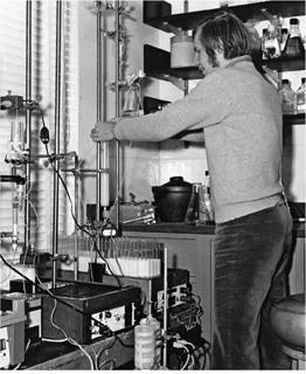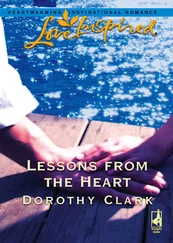James Watson - AVOID BORING PEOPLE - Lessons from a Life in Science
Здесь есть возможность читать онлайн «James Watson - AVOID BORING PEOPLE - Lessons from a Life in Science» весь текст электронной книги совершенно бесплатно (целиком полную версию без сокращений). В некоторых случаях можно слушать аудио, скачать через торрент в формате fb2 и присутствует краткое содержание. Жанр: Биографии и Мемуары. Описание произведения, (предисловие) а так же отзывы посетителей доступны на портале библиотеки ЛибКат.
- Название:AVOID BORING PEOPLE: Lessons from a Life in Science
- Автор:
- Жанр:
- Год:неизвестен
- ISBN:нет данных
- Рейтинг книги:5 / 5. Голосов: 1
-
Избранное:Добавить в избранное
- Отзывы:
-
Ваша оценка:
- 100
- 1
- 2
- 3
- 4
- 5
AVOID BORING PEOPLE: Lessons from a Life in Science: краткое содержание, описание и аннотация
Предлагаем к чтению аннотацию, описание, краткое содержание или предисловие (зависит от того, что написал сам автор книги «AVOID BORING PEOPLE: Lessons from a Life in Science»). Если вы не нашли необходимую информацию о книге — напишите в комментариях, мы постараемся отыскать её.
AVOID BORING PEOPLE: Lessons from a Life in Science — читать онлайн бесплатно полную книгу (весь текст) целиком
Ниже представлен текст книги, разбитый по страницам. Система сохранения места последней прочитанной страницы, позволяет с удобством читать онлайн бесплатно книгу «AVOID BORING PEOPLE: Lessons from a Life in Science», без необходимости каждый раз заново искать на чём Вы остановились. Поставьте закладку, и сможете в любой момент перейти на страницу, на которой закончили чтение.
Интервал:
Закладка:
Gus and his southern-born wife, Harriet, lived in Urey Cottage, a tiny wooden house built during the Depression to employ idle carpenters. It was named after Harold Urey, the famed Columbia University chemist whose discovery of heavy water won him the Nobel Prize in 1934. Harriet's genteel background had not prepared her for the manners of someone like Delbrück, who could brutally criticize others at seminars and then afterward chat amiably with them at meals. Nor
could she fathom how Manny Delbrück could leave her one-year-old son, Jonathan, with a babysitter to travel around Europe. Even more incomprehensible was Luria's support for Henry Wallace's new left-wing Independent Progressive Party, whose nominating convention in Philadelphia he had just attended with such enthusiasm. Upon his return, Luria organized a Saturday evening Wallace “corn party” in Jones Lab to raise money for the third-party ticket. Virtually everyone in the lab went, irrespective of their politics, to eat clams steamed in its autoclave and to drink beer. This was too much, however, for Harriet, who with Gus and his lab assistant, Maryda Swanstrom, picketed the party bearing large signs with the message “Wallace for President, Luria for Vice.”Always the favorite object of gossip was the frugality of the heavyset Milislav Demerec, whose verbal response to most propositions, good or bad, was “Do.” Often as dusk fell, we would spot him roaming the lab grounds turning off lights in buildings whose occupants had gone home for the night. Getting him to agree to major repairs except those absolutely necessary was virtually impossible. Hilariously, he once refused to repair the cracked toilet seat in the Williams House flat of Leonor Michaelis, the great German-born biochemist, who was quite used to getting his way in his luxurious New York City Rockefeller Institute.
Soon after becoming director, Demerec moved into Airslie, the early-eighteenth-century wooden farmhouse at the northern end of the grounds that until 1942 had been part of a grand estate of more than one hundred acres, belonging to Henry deForest, whose main house, Nethermuir, dated from the 1850s. The estate included a large stable as well as a very beautiful English-style garden that won many accolades for the Olmsted brothers, who designed it. Early in the century, deForest's talents as a lawyer representing J. P. Morgan's railroads helped him multiply an already hefty family inheritance. As a director of the Southern Pacific Railroad, he had his own private rail coach. But by the time he died, in 1938, time and the Depression had taken a toll and his assets, once exceeding $70 million, ultimately were reduced to only $8 million. Also soon gone was the once grand Nethermuir, said to have mysteriously burned down on a winter's night in 1945 after
Mrs. deForest had moved permanently to her New York City apartment on Park Avenue.With air-conditioning nonexistent outside a few lab rooms, the best way to beat Cold Spring Harbor's summer heat was to go swimming at high tide off the dock in front of Jones. When time permitted, we would swim off the sand spit, the body of land about a half mile long that almost closed off the inner harbor from the outer. At the Jones dock, there was a lab canoe that we used to paddle past the posh Moorings Restaurant on the eastern shore on our way to the village library, or the ice cream parlor, only three minutes away, which served super hot-fudge sundaes. There was also a tub-like boat owned by Sophie, the rotund blond fourteen-year-old daughter of the geneticist Theodosius Dobzhansky. She was spending the summer helping Barbara McClintock cultivate her cornfield. Frequently she saw reason to join the baseball games in the field to the east of the Carnegie main lab, fielding balls that careened toward McClintock's prized corn.
The Lab did not then own much of the land on the way to the sand spit. A large parcel still belonged to Rosalie Gardiner Jones, who lived in a mansion about a mile up the road to the Syosset train station. Born in 1885, the product of marriage between local estate-owning families, Rosalie had a long career as an activist suffragette and lawyer. Early in a life of more than ninety-five years, she was married off in a high-society wedding to Clarence Dill, a United States senator from Washington. But it was a brief union, as Rosalie soon found that she was not treated as an equal partner and the senator was dismayed to find his wife an untidy sort who buried garbage on the grounds of their home. Later Rosalie's most dependable companions were her white tennis shoes and the herd of goats that accompanied her on inspection tours of her various properties that dotted the shores of Cold Spring Harbor.
I first saw Rosalie when she drove her goat-bearing truck to the ramshackle mid-nineteenth-century wooden house she owned just north of the Firehouse. Without warning the Lab, she had rented it to migrant Jamaican farmworkers who had come to Long Island to help harvest vegetables on nearby farms. Quickly Demerec went to the police, telling them that the house, which we called Rosy's Cozy, was
not fit for human inhabitants. Within days he obtained a court injunction ordering her tenants removed. Rosalie responded by bringing in the NAACP and claiming that the migrant workers would not have been asked to leave if they had not been “colored.” But as soon as the NAACP representative saw the state of Rosy's Cozy, he too concluded that no one should live in such filth.On Long Island some four hundred grand landed properties existed at the peak of the Gold Coast era in the 1920s. To better see what they had been like, one Friday night I walked north several miles along the western shore of Cold Spring Harbor. After passing a large abandoned boathouse from those roaring years, I was soon at the base of the 150-foot Cooper's Bluff, which looked out over Center Island to the Connecticut shore six miles away. Across the half-mile channel that led into Oyster Bay, the sounds of dance music drifted from the posh Sea-wanhaka Corinthian Yacht Club, a world I would never enter that summer. A paved estate road led up from the shore to a village road that took me to the Cove Neck police booth. There I was given directions for the two-and-a-half-mile walk back to the Lab. Later I was to learn I had been trespassing on the property of the children of Theodore Roosevelt, whose nearby summer home, Sagamore Hill, was then still inhabited by his second wife.
There was much tension in the air whenever Luria talked science with the slightly younger biochemist Seymour Cohen, who lived with his wife in an adjacent Williams House flat. Having taken the phage course two years earlier, Seymour had subsequently switched from studying typhus to investigating phage replication as a chemical phenomenon. He had come for the summer from the University of Pennsylvania to do experiments in Gus Doermann's lab measuring the time course of phage DNA synthesis during phage multiplication. While his wife and Luria's could be civil to each other, Seymour sensed all too clearly that, as a chemist, he would never be more than an outsider among the Delbruck-led phage group.
The phage course ended in late July with the juvenile antics of its graduation ceremony, the first without Delbrück, who had not yet returned from Europe. Draped in a white sheet over my shorts, I was given the role of his ghost. I was almost as tall as Max and wanted to
move about like him, befitting the godlike way his spirit dominated the occasion. Beer was an integral part of the evening, and the resulting mayhem provided the perfect pretext for younger scientists to become better acquainted with the female Carnegie assistants, individuals of both groups doubtless knowing that life would get lonelier once the summer had ended. The course had brought together Günther Stent and Nao Okuda, a liaison that lasted all summer despite one unfortunate rendezvous in a field full of poison ivy. I spent the later part of the evening playing ping-pong under the Blackford porch with Sophie Dobzhansky or Nancy Collins, whose thick-rimmed glasses reflected the disdain she showed for girls who primped but had nothing going on between their ears. Nancy, a product of Vassar, was out for the summer from New York University to assist her thesis adviser, Mark Adams, with the phage course. She knew all too well that most men had only short-term objectives; like me, she was biding her time until the right person came along.
Интервал:
Закладка:
Похожие книги на «AVOID BORING PEOPLE: Lessons from a Life in Science»
Представляем Вашему вниманию похожие книги на «AVOID BORING PEOPLE: Lessons from a Life in Science» списком для выбора. Мы отобрали схожую по названию и смыслу литературу в надежде предоставить читателям больше вариантов отыскать новые, интересные, ещё непрочитанные произведения.
Обсуждение, отзывы о книге «AVOID BORING PEOPLE: Lessons from a Life in Science» и просто собственные мнения читателей. Оставьте ваши комментарии, напишите, что Вы думаете о произведении, его смысле или главных героях. Укажите что конкретно понравилось, а что нет, и почему Вы так считаете.












